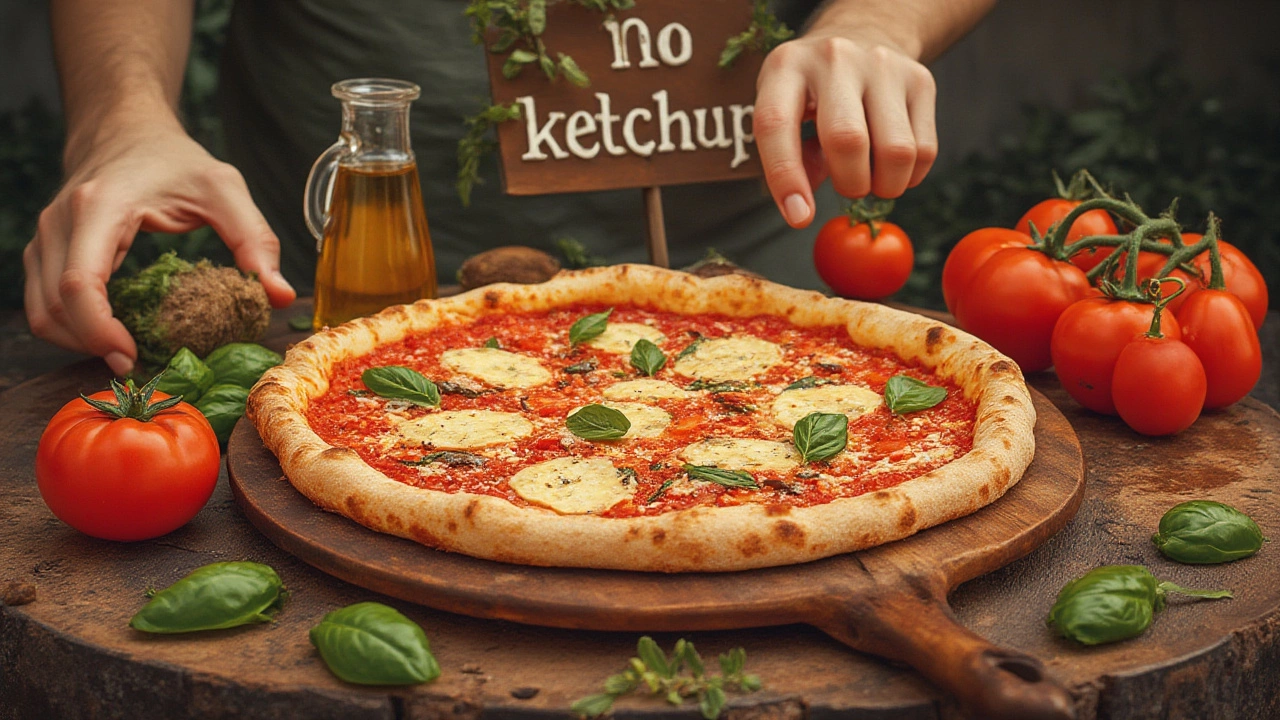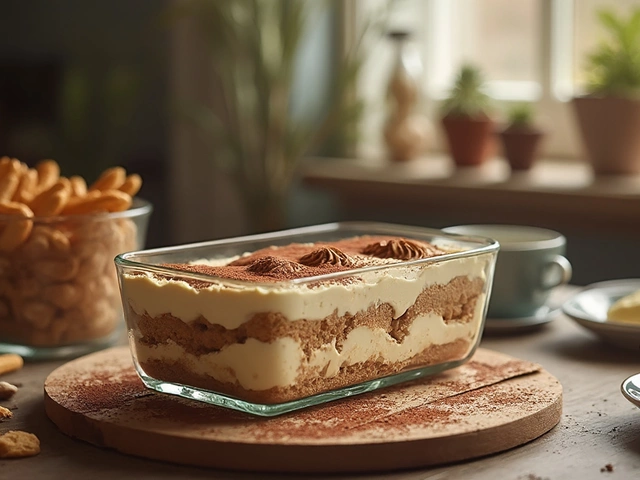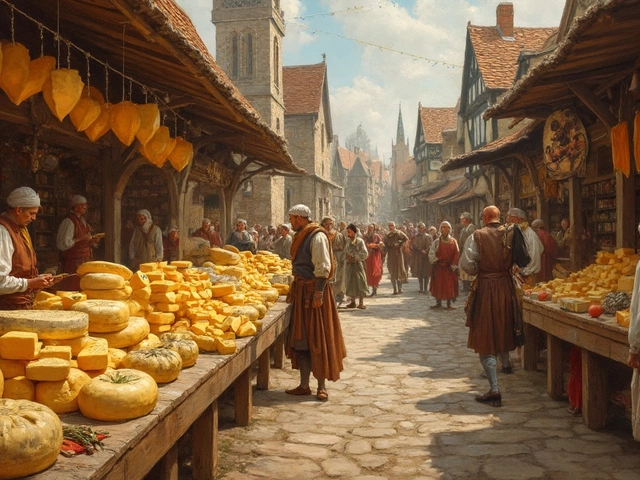Ask for ketchup to go with your pizza in Naples, and you’ll get everything from side-eye to sheer disbelief. Italians see pizza as a sacred food, not just a casual meal you smother with condiments. This might sound a bit extreme if you grew up dipping your crust in ketchup, but, for Italians, messing with pizza’s flavors crosses a line. Pizza is more than dough and toppings. It’s a symbol of Italian pride, history, and family—basically, you don’t mess with it lightly. Kids in Italy get schooled in pizza etiquette from their first slice; my daughter Maren was told by her Nonna that ketchup’s for fries, not Margherita. With that in mind, let’s break down why the humble bottle of ketchup is such a big no-no on Italy’s favorite food.
The History Behind Italian Pizza and Its Simplicity
Pizza’s story in Italy starts with the poor neighborhoods of Naples. Back in the 18th century, Neapolitans put whatever cheap ingredients they had on flatbread, but the base was always simple—tomato, cheese, and maybe some basil or anchovy. Even as pizza spread north to Rome and around the world, Italians held tight to these minimal, local toppings. There’s a reason why the famous Margherita pizza only has three colors—red tomato, white mozzarella, and green basil, representing the Italian flag. When Queen Margherita tried it in 1889, it stayed true to those ingredients for a reason: they work together, and the focus is on natural flavor, not overwhelming sauce.
Italians are fiercely protective of their traditional foods. There’s even a legal label—STG or "Specialità Tradizionale Garantita"—to guarantee that a pizza is made in the traditional way. Ketchup, invented in Asia and made popular in America, didn’t land on European shelves until the 20th century. By then, pizza’s reputation was set, especially in Italy’s south, where the locals see themselves as custodians of genuine pizza. Swapping out the bright acidity of Italian tomatoes for the syrupy sweetness of ketchup? That’s heresy to the true believers. An official law? No. But ask any Italian, and you’ll get a look that says, yes, there’s such a thing as pizza law, and ketchup breaks every rule.
Classic Toppings vs. Modern Additions: Where Ketchup Fits In
Traditional Italian pizza keeps ingredients fresh and few. It’s all about the quality of each one—buffalo mozzarella melted just right, San Marzano tomatoes, extra virgin olive oil, and maybe a pinch of oregano or a slice of prosciutto. The dough itself is made to taste good, not just serve as a vessel for other stuff. This is where ketchup totally misses the mark. First, ketchup covers up the tomato sauce. Italian sauces are simmered with garlic and basil for hours; the chefs actually taste and tweak them. A bottle of ketchup? Mass-produced, usually packed with high-fructose corn syrup, and missing the acidity and depth of a real sauce.
Here’s an easy way to see the difference: if you order a pizza in Italy, you’ll never find a squeeze bottle of ketchup anywhere near the table—not like those American pizza chains where every table comes with a bottle for dipping and drizzling. If you do spot ketchup, it’s a tourist trap, not a real pizzeria. Chefs see pizza as an art form—ketchup is like painting over a masterpiece with a red marker.
| Classic Toppings | Modern (Non-Traditional) Additions |
|---|---|
| Buffalo mozzarella | Chicken |
| San Marzano tomato sauce | French fries |
| Prosciutto di Parma | Ketchup |
| Fresh basil | Pineapple |
| Anchovies | Barbecue sauce |
Of course, Italian pizza chefs do experiment—especially in cities like Milan or Rome with younger crowds looking for modern flavors. But what you won’t find, no matter how wild the topping combinations get? That unmistakable red swirl of ketchup.

The Science and Taste Test: How Ketchup Changes Pizza
Ketchup and pizza sauce might look the same color, but that’s pretty much where the similarities end. A real pizza sauce is made from ripe, low-acid tomatoes picked at the peak of harvest. They’re stewed with a little salt, sometimes herbs, and left chunky so you taste every bite. Ketchup, on the other hand, is thickened, strained, and sweetened with heaps of sugar. It’s almost candy-sweet compared to the tangy, aromatic *passata* Italians make.
Taste tests done by food bloggers and pizza experts in both Italy and the US have shown that ketchup completely flattens the other flavors. Where a good pizza has layers—the smokiness of the crust, the tang of the sauce, the stretch of mozzarella—ketchup hits one strong high note (sweet) and drowns out everything else. This isn’t just tradition talking; it’s about how our taste buds pick up flavors. Maren once dipped her pizza in ketchup just to see what all the fuss was about, and her reaction was immediate. “I can only taste the ketchup, not the pizza!” That’s the dealbreaker for most Italians: if pizza ends up tasting like something else, then why bother with real pizza at all?
Some numbers give this debate even more flavor. According to the Associazione Verace Pizza Napoletana (the guardians of true Neapolitan pizza), real pizza sauce should contain less than 4% sugar, all from the tomatoes themselves. Commercial ketchup? Up to 22% added sugar, depending on the brand. That’s a huge difference, and it’s why ketchup on pizza tastes so jarringly sweet to Italians used to the punch of real tomato sauce.
Pizza Etiquette: The Italian Way to Enjoy a Slice
When you eat pizza in Italy, there are a few unspoken rules that make the experience totally different from what you get at most takeout chains. You won’t see people walking down the street gnawing at a folded slice; instead, pizza is eaten at the table, straight from the oven, cut with a knife and fork (at least to start). When tourists ask for ketchup, the staff might politely say “Non abbiamo ketchup”—we don’t have ketchup—but the meaning is clear. The pizza is supposed to stand on its own.
Italians do like to share their food, but they’ll give you side-eye if you start requesting extra sauces. There are a handful of accepted condiments—like chili oil (*olio piccante*) or maybe a sprinkle of Parmesan on pizzas that aren’t already topped with cheese. But ketchup? That’s reserved for burgers, fries, or sometimes eggs, not pizza. The reasoning here is practical, too. Motioning to Maren during her first pizza dinner in Milan, our waiter explained the ritual: sauce on pizza already brings out the crust’s flavor, so drowning it under more sauce (especially one flavored with vinegar and garlic) just muddies things.
- If you love a little extra flavor, drizzle olive oil or try chili flakes—never ketchup.
- Eat pizza hot and fresh, straight from the oven, for the best flavor.
- Don’t ask for substitutions if you want to blend in; embrace the simplicity.
- Your crust should be a bit charred, not overloaded with toppings.
- Remember, ketchup on pizza screams tourist—not local.
This etiquette isn’t about snobbery. Italians genuinely believe that their food tastes best as intended. Besides, with hand-stretched dough, slow-cooked sauce, and creamy mozzarella, that first bite rarely needs anything extra—certainly not ketchup!

Tips for Enjoying Pizza Like an Italian (At Home or Abroad)
If you want to experience pizza the Italian way—even in your own kitchen or at a pizzeria outside Italy—you don’t have to live without all condiments forever. But think simple and get curious about flavor. Rather than reaching for the bottle of ketchup, try making a classic sauce with just tomatoes, olive oil, a tiny pinch of salt, and some shredded basil. You’ll instantly taste more vibrance and less sugar, which can totally transform your pizza night.
For families, and especially with kids like Maren, it’s easy to adapt pizza to picky tastes without ketchup. Roast up some veggies as a fun topping, or add a few slices of fresh tomato before baking for a touch of extra juiciness. If you miss that sweetness, drizzle balsamic glaze (it’s made from grapes, not high-fructose corn syrup) over your pizza once it comes out of the oven. Italians also love ‘pizza bianca’—pizza without sauce—using just cheese, herbs, and olive oil. Sometimes less really is more.
When eating out, challenge yourself to order the most traditional pizza on the menu. Margherita, Marinara, or a simple Quattro Formaggi? You’ll notice there’s more going on in those three or four ingredients than in any heavily sauced pie. Lastly, if you’re traveling in Italy, trust the local way. Skip the ketchup, try the pizza as served, and savor how every bite tells a story passed down for centuries. It’s a connection to history—and a surefire way not to get stern looks from the table next to yours!





